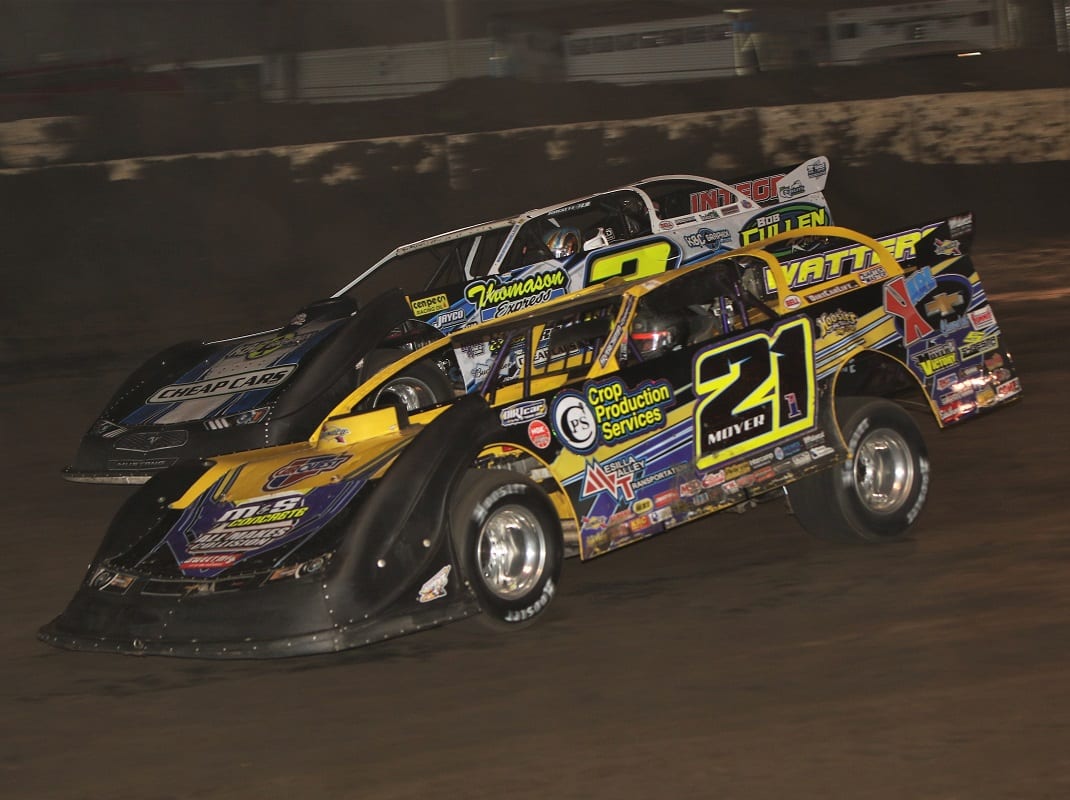FAIRBURY, Ill. – Tradition runs deep at Fairbury Speedway.
Situated at the corner of 1st Street and Pine Street in a small Illinois farming community, what fans see today is rooted in more than 140 years of history.
Those charged with leading the next generation have gained the experience of those before them. Such is the case with Fairbury Speedway’s new owner, Matt Curl.
A native of Fairbury, there are no bigger believers in how big a role the tiny quarter-mile dirt oval can play on the national racing scene than Curl.
For many, it will become obvious at this year’s 30th running of the Prairie Dirt Classic, featuring the World of Outlaws Morton Buildings Late Model Series.
Racers from around the country will pour into the town of less than 4,000, bringing enough fans to more than double its size.
“Being born and raised in the town of Fairbury and growing up and attending the races every Saturday night, nothing excites me more than to make sure we preserve the history of the speedway and continue the success so many people have built throughout all the generations of people involved with the Fairbury Speedway,” said Curl in a rare moment to catch his breath, while making sure every aspect of the facility is ready for the next event.
Fairbury Speedway’s roots go back to 1876. As America celebrated its 100th birthday, the Fairbury Union Agriculture Board was formed in order to purchase land and start a fair for the citizens of the area.
In 1903, a patch of Cyprus trees was cleared to make way for a horse track, which is still between the front stretch of the speedway and the covered grandstands that are still standing today.
After several years of horse racing, a gentleman named Newt Folton – the Fairbury Fair Secretary and local newspaper editor – had wooden planks installed on the half-mile horse track in hopes of hosting amateur auto racing in the near future.
In 1917, Eddie Rickenbacker, an American Flying Ace in World War I and Medal of Honor recipient, visited the track in an attempt to break the world speed record on a motorcycle. There is no indication he was successful.
From 1922 to 1927, racing was held regularly at the track. Competitors would come from bordering states to battle it out for a top prize of $400. Adjusted for inflation that is nearly $6,000 in today’s economy. Offering a large purse and great racing surface was vital to the track’s early growth.
The 1920s saw a boom in motorsports as technology began to improve with every passing day.
Taking the first official checkered flag was Earl Worrick of Covington, Ind., on Sept. 15, 1922. The Hoosier outpaced 11 other cars, completing the 20-mile race in just under 24 minutes and taking the trophy home in his Chevrolet.
During the depression, the track lay mostly dormant. Only three races were held between the years 1927 to 1937.
In 1938 the track was brought back to life by local auto dealer and race fan Elias Eli “Spud” Schlipf. Spud put together a committee who laid out improvements to the facility and came up with a proper marketing plan. They were able to persuade county officials that they could fill the stands, and the green light was given.
Spud and his crew went to work with a long list of improvements — taking down the infield fences prepping the surface with chloride — and managed to pull off a race in September of that year.
Racing was back at Fairbury.
Finishing off the list of improvements; the East turn was widened; new pits were built, and additional seats were installed in time for the 1939 races. Spud became known across the country as a premier promoter. His team would constantly monitor local conditions to ensure that Fairbury was not only the fastest track around but also the most entertaining and fan friendly.
Spud would go on to serve as the Fairbury race director until 1967, putting in a full 30 years at the track. It’s safe to say that without Spud and his vision, there would be no racing at Fairbury Speedway today.
To continue reading, advance to the next page.
